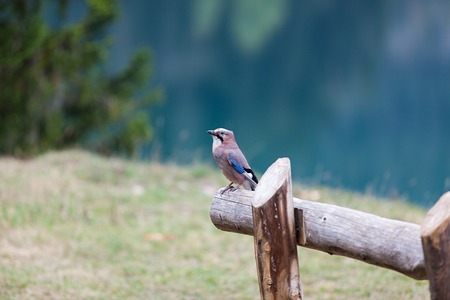Embracing the British Countryside
The British countryside unfurls like a living tapestry, woven with misty heather moors, rolling emerald hills, and ancient woodlands whispering with stories of centuries past. From the tranquil lakes of the Lake District to the wild, wind-swept coasts of Cornwall, these landscapes are more than just a backdrop—they’re an invitation to slow down and truly see. It is here, amidst dew-kissed meadows and tangled hedgerows, that wildlife photography takes on a distinctly British character. The shifting light over a Cotswold field or the hush beneath towering oaks can inspire even the most seasoned photographer to look closer, seeking out shy deer at dawn or the sudden flash of a kingfisher by the riverbank. Each footstep along these trails reveals new wonders: foxes padding through bluebell woods, red squirrels darting across mossy logs, or skylarks spiralling above windswept fens. To wander with your camera in hand is to become part of this ever-changing story—a gentle pursuit where patience is rewarded by moments of wild beauty unique to the heart of Britain.
2. Essential Kit for the Trail
Setting off on a British wildlife photography adventure means preparing for every twist and turn our wild weather can throw at you. From the rolling mists of Dartmoor to the windswept coasts of Northumberland, your equipment needs to be as resilient as the creatures you seek to capture. Let’s explore the must-have kit that ensures you’re ready to seize those fleeting moments in nature, come rain or shine.
Recommended Camera Gear
Your camera is your companion through the shifting British seasons. A weather-sealed DSLR or mirrorless camera is a smart investment—think models from Canon’s EOS series or Nikon’s Z range, both robust enough for woodland rambles and coastal hikes. Pair this with a versatile zoom lens (such as a 100-400mm) for distant deer or flitting birds, and a sturdy but lightweight tripod for stability during golden hour. Don’t forget extra batteries and memory cards; chilly mornings on the trail can drain power faster than expected.
Outdoor Clothing: Prepare for All Seasons
British weather is famously unpredictable. To stay dry and comfortable, layer up with moisture-wicking base layers, an insulating mid-layer, and a waterproof outer shell—GORE-TEX jackets are a firm favourite among ramblers and photographers alike. Waterproof trousers, sturdy walking boots with good grip, and thermal gloves that allow camera operation are essential when waiting patiently in damp meadows or along muddy footpaths.
Trail-Ready Accessories
| Accessory | Purpose | Why It Matters |
|---|---|---|
| Weatherproof Camera Bag | Keeps gear safe & dry | Protects against sudden downpours common in the UK countryside |
| Lens Cloth & Rain Cover | Cleans lenses & shields equipment | Mist, drizzle, and salty sea spray are never far away |
| Field Guidebook | Identifies local species | Adds depth to your photography by understanding your subjects |
| Pocket Notebook & Pencil | Jotting observations and settings | Helps recall special sightings and fine-tune your craft |
| Portable Seat Pad | Sit comfortably outdoors | Makes long waits for elusive wildlife more pleasant |
| Flask of Tea or Coffee | Keeps spirits high | No British outing is complete without a hot brew! |
The Art of Being Ready
With these essentials packed, you’re set to embrace whatever the British elements serve up. Your readiness not only makes your journey more enjoyable but also allows you to focus wholly on capturing the subtle beauty of native wildlife—the silent deer at dawn, the bright flash of a kingfisher by a riverbank, or the soft rustle of hedgerow life after rain. Each careful choice in your kit brings you closer to telling the untamed stories that unfold just beyond the next stile.

3. Respecting Wildlife and the Countryside Code
There’s a particular magic to wandering Britain’s wild spaces with your camera in hand, but as photographers, we have a duty to tread lightly. Observing wildlife responsibly is at the heart of ethical nature photography here. The British outdoors is shaped not only by its ancient woodlands and rolling hills but also by an age-old respect for the creatures that call these places home.
Observing Without Disturbance
Whether you’re quietly waiting for a red squirrel in a Cumbrian forest or tracking deer across Scottish moorland, always keep a respectful distance. Use your lens’s reach to observe natural behaviours without interfering. Sudden movements or intrusive approaches can distress animals, disrupt feeding, or even endanger their young—moments best left undisturbed.
The Countryside Code: A Photographer’s Guide
The Countryside Code is more than just tradition; it’s the backbone of responsible outdoor exploration across England, Scotland, Wales, and Northern Ireland. Stick to marked footpaths, close gates behind you, and leave no trace of your visit—these simple acts help preserve habitats for both wildlife and fellow wanderers. Avoid trampling through nesting areas or disturbing ground cover; sometimes the best shot is the one taken from afar.
Ethical Practices Unique to Britain
Britain’s landscapes are often shared spaces—farmland, public rights of way, national parks—and respecting landowners’ wishes is paramount. Always seek permission if venturing off-trail or onto private land for that elusive photograph. Embrace local traditions such as “leaving only footprints,” and remember that patience and quiet observation are valued just as much as technical skill in British wildlife photography.
By following these guidelines, we honour not just our subjects but also the generations who have cherished these green and pleasant lands before us. Let your images tell stories of connection—where respect for nature becomes part of every frame.
4. Chasing Light: Weather and Timing in the UK
There’s a certain magic to wandering Britain’s wild places, camera in hand, as shifting weather breathes life into the landscape. The British Isles are renowned for skies that transform in moments—where sunlight tumbles through rain-laden clouds, or a sudden mist softens a woodland trail. For wildlife photographers, reading these changes is as important as knowing your subject. The dance of light and shadow can turn an ordinary encounter with a red deer or barn owl into an evocative image that brims with atmosphere.
Golden hour—those precious minutes just after sunrise or before sunset—bathes everything in warm, honeyed light. In the UK, this glow can be especially fleeting as clouds sweep across the horizon. But it’s worth rising early, braving the chill, or lingering on the trail at dusk. During these times, wildlife is often more active, and their surroundings take on deeper hues; a fox’s russet coat glows against dew-soaked grass, while kingfishers shimmer above a river gilded by low sun.
Learning to read the skies becomes second nature for seasoned British photographers. Watch for breaks in cloud cover that let shafts of sunlight spotlight your subject, or embrace the drama of gathering storm clouds to add mood to your compositions. Sometimes, it’s the silvery drizzle or a foggy dawn that tells the most poignant stories—a roe deer emerging like a ghost from the mist, or raindrops clinging to a spider’s web strung between brambles.
Weather Condition |
Photographic Opportunity |
Tips |
|---|---|---|
| Misty Morning | Ethereal landscapes and secretive wildlife silhouettes | Use wide apertures to accentuate depth; focus on shapes and outlines |
| Rain Showers | Dramatic lighting and reflective surfaces | Shoot towards the light for backlit raindrops; protect your gear with covers |
| Golden Hour | Warm tones and active animals | Plan your route to maximise exposure; adjust white balance for richer colours |
| Cloudy Skies | Soft, even light and muted scenes | Ideal for close-ups of birds or mammals; avoid harsh shadows on subjects |
The best advice is simply to stay present and patient—sometimes the most stirring images are born in moments you hadn’t planned. Whether it’s the sudden parting of clouds over Dartmoor or shafts of light through ancient oaks in Sherwood Forest, let Britain’s ever-changing weather lead you to sights only you can capture through your lens.
5. Iconic British Species to Photograph
Britain’s wild heart beats strongest in the creatures that have roamed its fields, forests, and shores for centuries. As you wander along ancient trails or pause at windswept lookouts, you’re invited into the lives of iconic species whose stories are woven into the nation’s landscape. Each season brings its own cast of characters: the majestic red deer standing tall amid a purple Highland heather moor, their antlers silhouetted against dawn mist; the inquisitive foxes darting through urban edges and woodland clearings, ever watchful yet oddly comfortable in our presence.
Puffins Along Rugged Shores
Spring and early summer transform Britain’s coastal cliffs into bustling colonies as puffins return from sea. With their colourful bills and endearing waddle, puffins along the Northumberland or Pembrokeshire coasts offer unforgettable photo opportunities—especially as they bring sand eels back to their burrows beneath wildflower-dotted turf. Watching them launch into briny air, you can’t help but feel swept up in the rhythm of returning life.
The Elusive Otter
In quieter corners, where rivers run slow and reed beds ripple in the breeze, the elusive otter may reveal itself at dawn or dusk. Their playful dives and sinuous movements mirror the gentle flow of water, offering a rare glimpse into a thriving ecosystem—if you’re patient enough to wait by the riverbank with camera poised.
Seasonal Surprises: From Bluebells to Butterflies
The changing year also brings more subtle joys. In spring, bluebell woods become dappled cathedrals where badgers snuffle through leaf litter; in summer, clouds of butterflies, like peacocks and red admirals, dance over sunlit meadows. Each encounter is an invitation to slow down and see—truly see—the wild Britain that so often hides just beyond our hurried gaze.
Whether your path leads you to mountain glens or tidal estuaries, remember that patience and quiet observation are your best companions. Through your lens, you can honour these beloved species—and perhaps inspire others to cherish them too.
6. Crafting Your Story Through the Lens
There’s a quiet poetry to wandering Britain’s wild places, camera in hand and senses attuned to every subtle shift in light and movement. Wildlife photography on our native trails is far more than simply snapping a record of what you see; it is about weaving your own narrative into the living tapestry that unfolds before you. Each hedgerow, dew-laden meadow, and ancient woodland whispers its own story—one that changes with the seasons and your perspective. Let your lens become not just an observer but a storyteller, capturing moments where British nature reveals its character: the startled glance of a red deer at dawn, the bold flash of a kingfisher over a winding brook, or the gentle hush as mist rolls through bluebell woods. These are images not only rich in place but alive with personal interpretation.
Finding Your Unique Perspective
Instead of chasing after grand vistas or rare species, focus on what moves you most deeply—a shaft of golden sunlight filtering through brambles, the intricate textures of an ancient oak’s bark, or the quiet resilience of urban foxes slipping through shadowy alleyways. By paying attention to both the grand and the intimate details, your photography becomes an authentic reflection of your encounters. It’s here, in these honest observations, that your creative voice finds its footing.
Embracing British Light and Weather
The British weather is famed for its unpredictability, yet this ever-changing sky offers endless opportunities for mood and meaning in your photographs. Misty mornings soften the boundaries between land and sky; sudden shafts of sunlight bring a fleeting brilliance to mossy rocks or fluttering wings. Allow these elements to guide your storytelling—embrace overcast days for their muted palette or dramatic clouds for their brooding drama.
Telling Stories That Matter
Above all, let your images speak not just of wildlife but of connection—between yourself and the landscape, between people and place. Share moments that stir emotion: a hedgehog sheltering beneath autumn leaves or the first songbirds heralding spring. In doing so, you invite others to experience the magic of British nature as you see it: vibrant, unpredictable, and utterly alive with stories waiting to be told.


